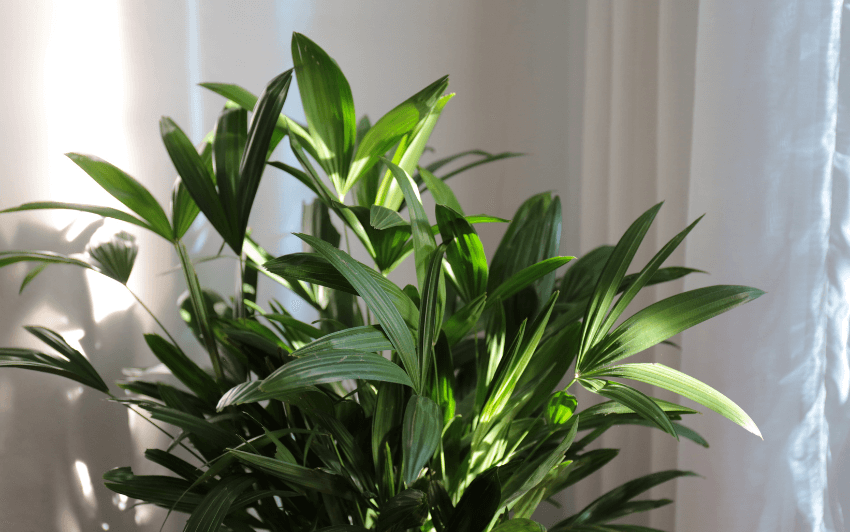
How to Reduce Allergens in Your Home
When talking about home allergens, many people think of pollen from trees, plants, and grass, carried by the wind. However, the list of common home allergens extends far beyond pollen.
If you want to breathe easy whether it’s allergy season or not, read on for helpful tips on how to reduce allergens in the home. From choosing the right window treatments to picking the best bed sheets, to preventing mold, we will cover all the things you can do to reduce home allergens.
How to Reduce Allergens in the Home
Do Regular Cleaning
Chronic or recurrent allergy symptoms (e.g. rhinitis, stuffy nose, constant sneezing) are usually due to airborne home allergens. By making sure the house is clean, you can avoid instances of inhaling dust, spores, trapped pollen, dander, and so on—therefore reduce allergic symptoms.
When doing a weekly clean, remember to target areas where allergens are likely to build up. These could be the shelves, carpets, old drapes, or under furniture. Use a vacuum with a HEPA filter and wear a face mask to avoid triggering your allergies while cleaning.
Keep Mold at Bay
Mold on floors and walls can release spores that can be inhaled and trigger allergic reactions such as sneezing, nasal congestion, watery eyes and more. Mold spores can also aggravate other respiratory conditions like asthma.
All in all, it’s important to keep mold at bay in order to improve respiratory health and keep your family and guests safe. Undiluted white vinegar is effective in killing mold, however, to prevent it from growing in the first place, it’s important to avoid high home humidity.
Don't Invite Pests into Your Home
Cockroaches can cause allergic reactions in some individuals. Apart from being potential allergens, cockroaches are unsanitary pests. Here are a few tips to keep cockroaches away from your home:
-
Store all leftovers in sealed containers
-
Make sure garbage is covered
-
Clean up food or sauce spills promptly
-
Make sure that windows and exterior doors are sealed
Pick Plants that Naturally Purify the Air
Some plants release more pollen than others. So whether you’re getting plants for inside the home or for your yard, be mindful of the species you get.
Generally, plants with no flowers and larger leaves are less likely to produce a lot of pollen. Additionally, plants like lady palm or bamboo palm are known for removing particulates in the air.
Choose Your Window Treatments Wisely
Next up in our guide about how to reduce allergens in the home is yet another way to deal with pollen. When the wind carries pollen into the home, it can get trapped on window treatments. The trapped pollen can then travel through your home at unpredictable intervals throughout the day, even when the windows are closed.
Avoid fabric-based window treatments that tend to trap large amounts of pollen and dust. Opt for window treatments that are made of faux wood, wood, or metal. These trap fewer home allergens and are also easier to clean.
Know When to Close Your Windows
If you’re allergic to pollen, you might need to consider closing your windows when pollen peaks. This usually occurs at midday and slowly decreases towards the evening.
Choose Fabric and Sheets Wisely
Generally, fabric with larger pore sizes will collect more dust and attract dust mites. And if you’re wondering if there is such a thing as dust-mite repellant fabric, the answer is yes. Genuine silk has fibers coated with a compound called sericin which repels dust mites.
Deep Cleaning Your Carpet - Or Removing it Altogether
Pollen, dander, dust, dust mites, and mold spores—the most notorious common home allergens—thrive on heavy, textured fabrics like carpets and rugs. If you want a passive strategy against home allergens, you may need to remove or reduce the carpets and rugs in your home. Otherwise, you’ll need to make sure that your carpet is regularly cleaned.
Know When to Replace your Mattress & Couch Upholstery
Next up on this guide about how to reduce allergens in the home, we take a closer look at common dust mite havens. We’re talking about mattresses, couches, and pillows.
Smaller items like pillows or removable couch cushions can be easily washed. As for couches and mattresses, vacuuming and steam cleaning regularly can help keep dust mites at bay. If these cleaning methods don’t produce results after some years, it could be time to replace your mattress or have your sofa reupholstered.
Upgrade your Home's Air Filteration System
All of the above tips on how to reduce allergens in the home will produce results when observed consistently. But if you want an impactful solution that does not depend on your efforts alone, you may need to replace your HVAC filter—or replace the system entirely.
Breathe Easier & Get Better Sleep with Napoleon’s Air Filter
Napoleon’s HVAC filter is a durable and efficient device that will improve the air quality in your home. Aside from allergens, Napoleon’s sophisticated HVAC filter traps dirt, bacteria, and airborne pollutants.
If you have more questions about how to reduce allergens in the home or how Napoleon’s HVAC filter traps home allergens, learn more here or talk to a Napoleon expert.

